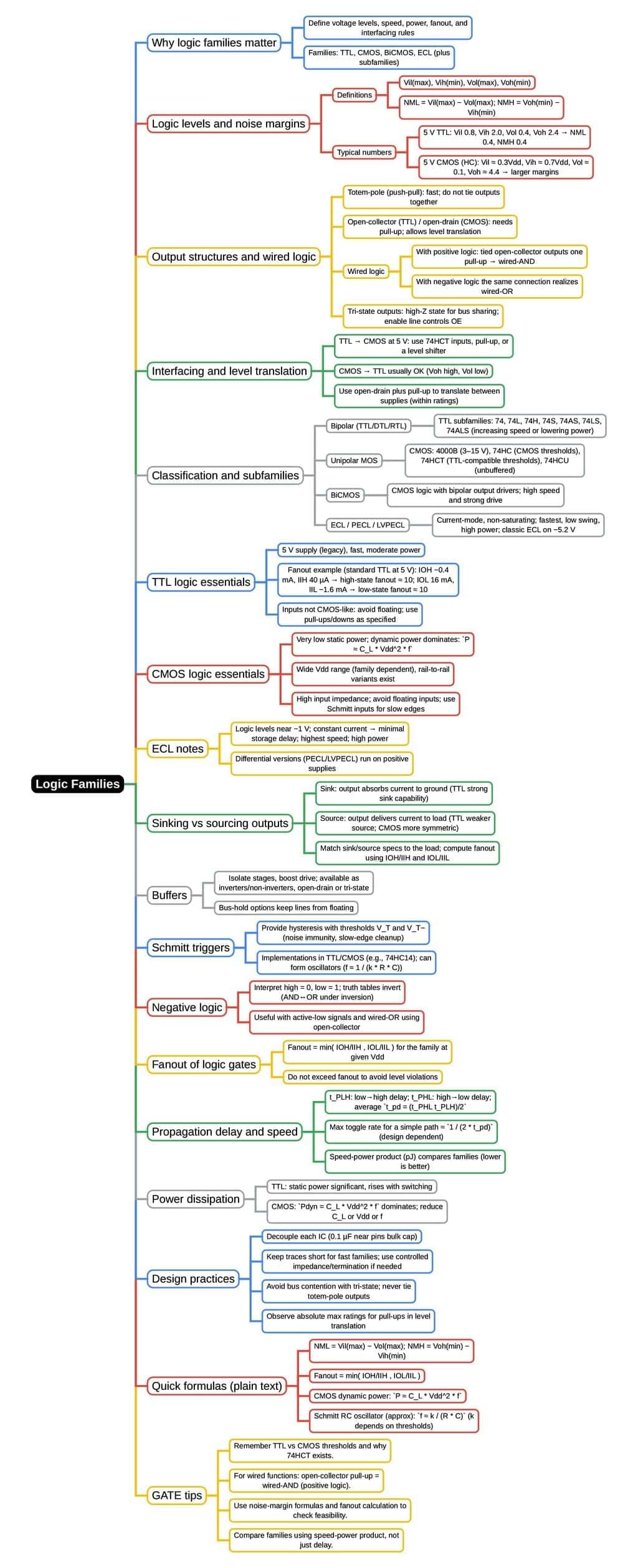Electrical Engineering (EE) Exam > Electrical Engineering (EE) Notes > Digital Electronics > Mind Map: Logic Families
Mind Map: Logic Families | Digital Electronics - Electrical Engineering (EE) PDF Download

The document Mind Map: Logic Families | Digital Electronics - Electrical Engineering (EE) is a part of the Electrical Engineering (EE) Course Digital Electronics.
All you need of Electrical Engineering (EE) at this link: Electrical Engineering (EE)
|
113 videos|91 docs|58 tests
|
FAQs on Mind Map: Logic Families - Digital Electronics - Electrical Engineering (EE)
| 1. What are the main types of logic families used in electrical engineering? |  |
Ans. The main types of logic families include TTL (Transistor-Transistor Logic), CMOS (Complementary Metal-Oxide-Semiconductor), ECL (Emitter-Coupled Logic), and RTL (Resistor-Transistor Logic). Each family has its own characteristics in terms of speed, power consumption, and noise margins.
| 2. How does CMOS technology differ from TTL technology in logic families? |  |
Ans. CMOS technology uses both p-type and n-type MOSFETs to achieve low power consumption, making it ideal for battery-operated devices. In contrast, TTL relies on bipolar junction transistors, which generally consume more power but offer faster switching speeds. CMOS is also more resilient to noise compared to TTL.
| 3. What are the advantages of using TTL logic families in circuits? |  |
Ans. TTL logic families offer advantages such as high speed, ease of integration, and compatibility with various voltage levels. They are also widely available and have a well-established design methodology, making them a popular choice for many digital circuits.
| 4. What factors should be considered when choosing a logic family for a specific application? |  |
Ans. When selecting a logic family, factors to consider include speed requirements, power consumption, noise margins, operating voltage levels, and the availability of specific logic gates or functions. Additionally, the cost and the complexity of the circuit design may also influence the choice.
| 5. What is the historical significance of the development of logic families in electrical engineering? |  |
Ans. The development of logic families revolutionized digital electronics, starting with the invention of RTL in the 1960s, followed by the introduction of TTL, which became the standard for many applications. The emergence of CMOS technology in the 1980s further advanced the field by enabling the creation of highly integrated circuits with lower power consumption, paving the way for modern computing and communication systems.
Related Searches















